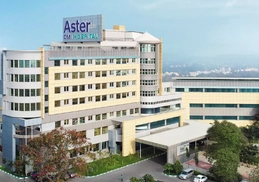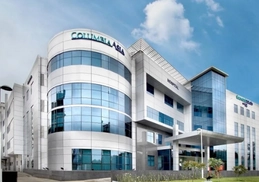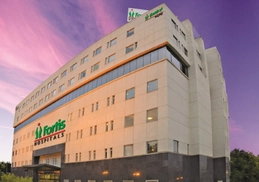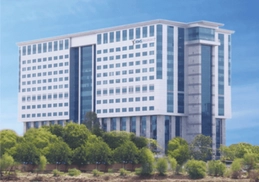
+91 8095511877

+91 8095511877
Laminectomy surgery relieves the compression on your spinal cord as it passes through the vertebrae in the spine. Your spinal cord passes through the spinal canal as it comes down from the brain.
As you grow older, the spinal canal tends to get narrow. This condition is spinal stenosis. Bone spurs or growth in the bones due to arthritis is the most common reason for stenosis. Bulging of intervertebral discs and overgrowth of ligaments are other usual causes.
All these will compress your spinal cord as it passes through the spinal canal. There will also be compression on the spinal nerves. Spinal cord and nerve compression will result in pain as well as other complications.
If it occurs in the cervical vertebrae, you will have weakness or pain in the arms. In the lumbar vertebrae, the complications include pain and cramps in the leg, loss of bowel and bladder control, and numbness below the waist.
A laminectomy can remove the compression on your spinal cord and nerves. During the surgery, your surgeon will remove the lamina located at the back of the vertebrae. It increases the space for the spinal cord to pass through it without any pressure. It will also reduce the pressure on the spinal nerves.
You will have to be in the hospital for four to five days for the surgery. The duration of the operation will be around three to four hours.
You may have a laminectomy on your cervical or lumbar spine. At times, your surgeon will also do a spinal fusion surgery along with this. It helps to stabilize the vertebrae and to make them move as a single unit.
In the first stages of spinal stenosis, you will have pain. The pain will have the following features
As the narrowing of the spinal canal increases, the symptoms will become more severe.
Medications, physical therapy, modification of activity are the first line of treatment. In some, these provide significant relief. In others, these measures offer little or no comfort. Laminectomy surgery is the best option in such cases.
If you have problems with bowel or bladder control due to spinal cord or nerve compression, surgery is a must. Otherwise, you may have severe complications.
For you to be the right candidate for a laminectomy, you will have to fulfill a few criteria. They include
If you had a laminectomy before and the results were not on expected lines, you need to think twice before having another. It is particularly so if the level is the same.
Laminectomy can reduce the compression of the spinal cord. But it cannot prevent further arthritic changes from occurring in the vertebrae. These changes can again cause stenosis of the spinal canal.
A laminectomy is not for you if you
Before surgery
Before the surgery, you will have various imaging tests of your spine. These will include X-rays, CT, and MRI scans. You will also have a medical examination to assess your fitness for surgery.
Your surgeon will then explain to you about various aspects of surgery, including recovery, risk, and complications.
You will have to tell your surgeon about any medicines that you are taking. Medications like blood thinners and some herbal supplements can cause excessive bleeding. You need to stop these before surgery.
Having a nutritious diet is essential for a faster recovery. You will have to take a diet rich in vitamins, minerals, and proteins for a few weeks before surgery. It will help you to be fit and will also make your recovery faster.
The surgery will restrict your activities for a few weeks. It would be good to have someone to help you around during this time will be of benefit. So, enlist help before the surgery so that everything will be ready by the time you are back home.
For a laminectomy, you will have general anesthesia. So, you will be unconscious during the procedure. For lumbar or sacral laminectomy, the surgeon will, at times, prefer spinal anesthesia. In that case, you will be awake during the procedure, but will not feel any pain.
Once you are asleep, the surgeon will make an incision at the level of vertebrae having the surgery. An open surgery incision will be a long one extending along the length of the vertebrae. For minimally invasive surgery, there will only be two or three small incisions on the sides of the vertebrae.
The surgeon will then retract the muscles and ligaments to expose the vertebrae. The next step is to cut off the lamina on the back of the vertebrae.
The surgeon will shape the inside of the vertebrae by removing bone spurs. If there is an overgrowth of ligaments, the surgeon will trim them as well.
The next step is to increase the width of the foramina (small openings for the spinal nerves to pass through). It helps to avoid pressure in the spinal nerves.
If your vertebrae are unstable, your surgeon will also do a spinal fusion. It will give stability to the spine and prevent the vertebrae from moving.
The surgeon will then close the incision with sutures or staples. A surgical drain to remove any fluids in the operating site will be in place before suturing.
After surgery
Once you wake up, you will find that there is a bandage on your back. You may feel some pain as the effects of anesthesia wear off. Painkillers will help to control the pain.
You might have a brace on your back if you had a spinal fusion surgery along with laminectomy. It provides support to the spine by preventing the movement of vertebrae.
It is important to avoid bending or stretching your back for a few weeks after surgery.
The next step is to take a few steps in the room and then short walks in the corridors. You will also have to climb stairs as part of your recovery from the third or fourth day.
You will not have any food restrictions after surgery. But it will be better to have a liquid diet for a couple of days. Eating a nutritious diet will aid in a faster recovery.
You will be able to go home on the fourth or fifth day, depending on your progress.
Once back home, you will have to take adequate rest. At the same time, you will have to do the prescribed exercises as well. These exercises will help to strengthen the muscles on your back to keep your spine stable.
You need to take good care of your incision wound. Keeping it dry and clean will help to prevent infections. While bathing, you will have to cover the wound adequately.
It is natural for you to feel some pain in the days following the surgery. In some, the pain after surgery will be more than before. It is due to the effects of surgery and will go off in a few days. You will have to take painkillers for a few weeks after surgery to control pain.
If you have constipation, you need to take laxatives. It is important to avoid straining while passing stools.
You will have to wear compression stockings to avoid blood clots in the legs
You can go back to work after four to five weeks. But make surge that you don’t bend or squat while working. Driving will have to wait for a few more days.
Complete recovery will take about eight to ten weeks.
There are a few risks and complications such as
In some persons, the surgery will fail to give relief from symptoms. In such cases, further treatment will be necessary.


This article has been reviewed for medical correctness and relevance by
Dr Srinivasa N
Dr. Srinivasa. N is an an accomplished orthopaedic spine surgeon offering highest standard of care to patients affected with spinal disorders. He is currently working as a consultant spine surgeon at Tejasvini hospital,Mangalore, Karnataka. His areas of expertise include endoscopic spine surgeries, spinal decompression and fusion surgeries, surgeries for scoliosis andkyphosis, vertebroplasty

Apollo Health City

Aster CMI

Columbia Asia

Fortis Bangalore

Fortis Memorial Research Institute(FMRI)

KIMS Hospital Hyderabad
Frequently Asked Questions
Is Laminectomy a major surgery?
What are the side effects of a laminectomy?
How much does Laminectomy cost in India?
Does a laminectomy weaken your spine?